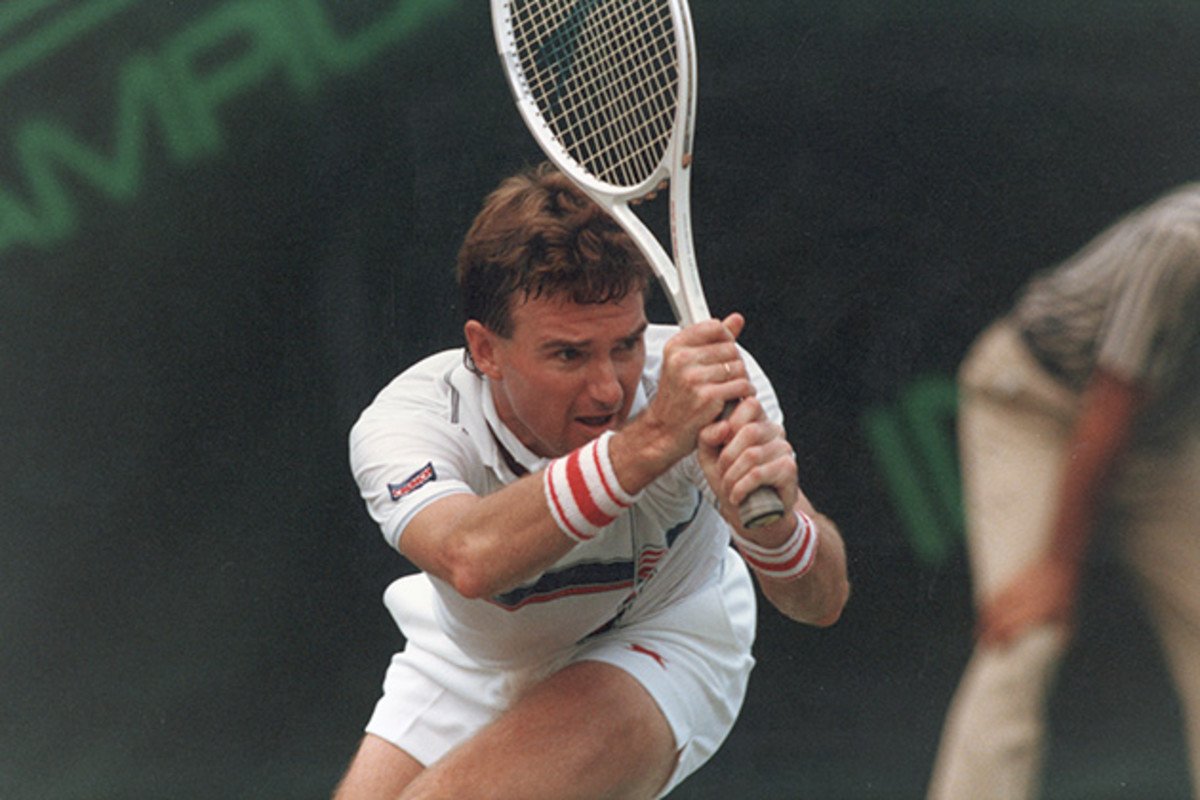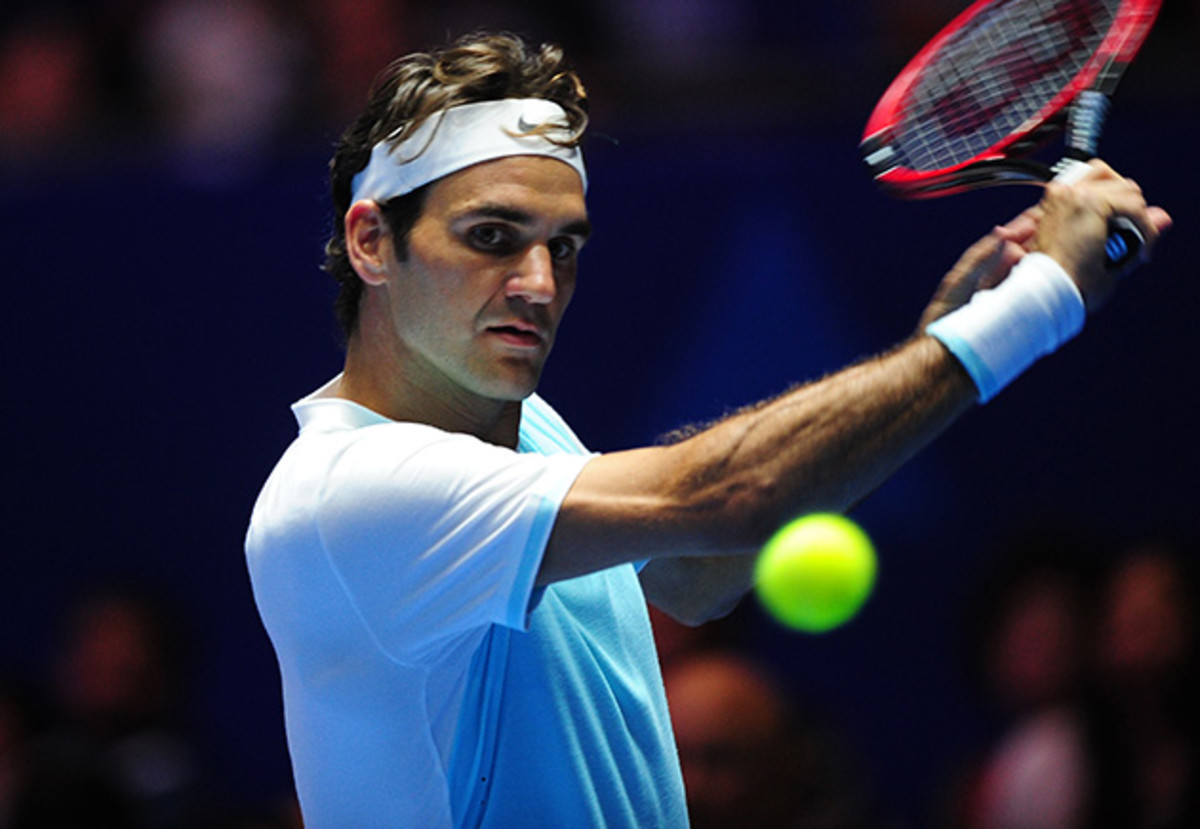The history of rackets and why players experiment with head size, materials

This story is one segment of a four-part series on SI Tennis that will look back in history and chronicle the changes and progression of fundamental aspects of the game, from sneakers to rackets and more.
Jimmy Connors always gets so much credit. Sure, he won an ample number of Grand Slam titles in the steel Wilson T2000, but it was Billie Jean King who took the first T2000 title in 1967. And really, it took a 1950s design and a belief by a different company to King's or Connors' oppotunities even possible.
For many years, tennis was played with wooden rackets. There was some experimentation with laminating woods, but Bill Severa, Wilson’s global director of technology says the wood rackets remained pretty much the same since the early teens [in the 20th century] up until the mid-60s.

"The wood rackets were all based off natural wood and while we sold millions and millions of rackets in those years, there was no real definite evolution," he says.
That evolution took public shape in 1967. But it started in 1953, when Frenchman René Lacoste came up with a design for a metal racket, patenting it that same year. Wilson later acquired the rights to it and in 1967, players grew intrigued enough by the Wilson-made T2000 that it showed up in tournaments. It made its first appearance in the Wilson catalog in 1969.
Connors saw the racket as a youth player, getting his hands on it before many of the men in tennis. King gave it a whirl for a number of years, too. The 67-square-inch head on the T2000 was unlike a wood racket in so many ways. The power and control generated from the center was the difference maker.
The history of natural gut strings and why they're still used in tennis today
And with wood finding a challenger in steel, the race for new materials was on. Aluminum, easier to mold than steel, made its debut in the 1970s. But there was more coming. The carbon fiber composite industry wasn’t new in the '80s, having been around since the '50s, Severa says. But at exorbitant prices, carbon fiber wasn’t plausible for sporting goods. As prices started to drop for carbon fiber, tennis companies could experiment.
The big convergence was in 1983, when last Wilson catalog featured wood, steel and composite rackets. Just one year later, the company that had been making wood rackets since 1917 was fully in the composite world for its high-end line.
Todd Martin, former pro player and now the CEO of the International Tennis Hall of Fame & Museum, says he was still playing with a wood racket when he was a 10-years-old, but he quickly moved through wood and aluminum into graphite carbon fiber.
Composite fiber has remained the key material now for over 30 years. With about five major manufacturers of the graphite material, every racket maker has their own tweak on the system, trying to bring out different attributes of the fiber, sometimes mixing and matching differing fiber types and resins within single rackets.
There will always be experimentation too, as we’ve seen braiding techniques, titanium, tungsten, basalt and Kevlar.
The history of tennis umpiring: How Hawk-Eye changed the game
Materials aren’t the only major driver of racket change. Size matters.
From the small-headed wood rackets to that 67-square-inch T2000, rackets have evolved quite a bit. Give Howard Head some of the credit—he received the first oversized racket patent in the late 1970s, an extreme 100 square inches for a racket head. At one point the market ballooned all the way to seeing rackets as big as 135 square inches. It has come back down now, especially as rules limit dimension heads to about 125 square inches. (A correctly-proportioned racket can still legally reach 135.)
Roger Federer recently saw this shift in his own career come to a culmination with a change in racket size in 2014.

“For me switching rackets was not only about a larger head,” Federer said in fall 2014. “I was also looking for a racket that was more forgiving and could provide me with easy power. It was also important that my racket was responsive and offered the same great feel I had grown accustomed to in my previous Wilson Pro Staff rackets. The larger racket suits my attacking style, allowing me to play more aggressively and with less risk.”
The end result for Federer’s signature Pro Staff was one that featured the braided graphite and Kevlar just as his old racket had, but with a larger head—he went from 90 to 97 square inches—for a “larger sweet spot.”
Martin says he experimented throughout his career with the thickness on his beam more than anything, toying with—as others have by experimenting with different head sizes—the ability to power a serve versus control a shot.
The evolution of tennis shoes: From plimsolls to Stan Smiths and Nikes
“A wide body was made, I believe, for people who needed power,” Martin says. As racket heads grew, Martin says the game evolved into a power-hungry style. “If you didn’t have a big serve, you probably weren’t going to be a great player unless you were skilled like (Andre) Agassi.”
As the game has further evolved, including with string technology, racket size and weight combine with strings to form the key technological aspects of a racket, Martin says.
Federer says that seeing lab-generated data on how different frames impact ball spin, ball speed and racket head speed has made choosing a racket a truly high-tech process.
The question for the future, though, remains: What’s next? What is next for materials, especially? Wood lasted roughly a century. Steel was just over a decade. Carbon fiber has had a good run. The future will come and the next Connors or King will show it all off.
Tim Newcomb covers stadiums, sneakers and technology for Sports Illustrated. Follow him on Twitter at @tdnewcomb.
